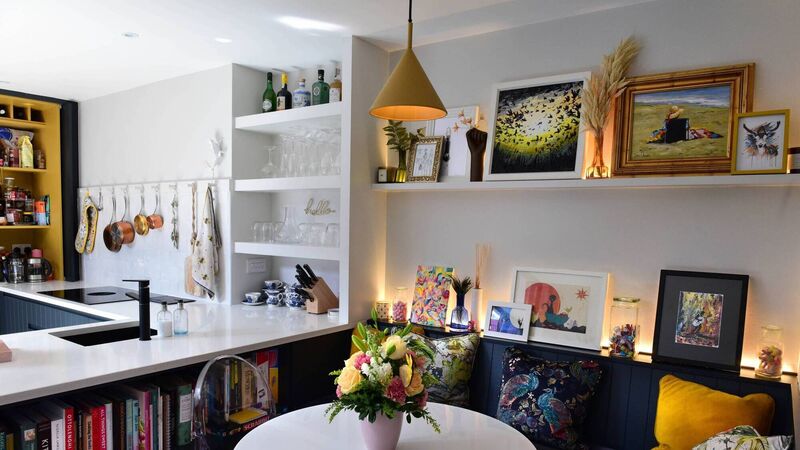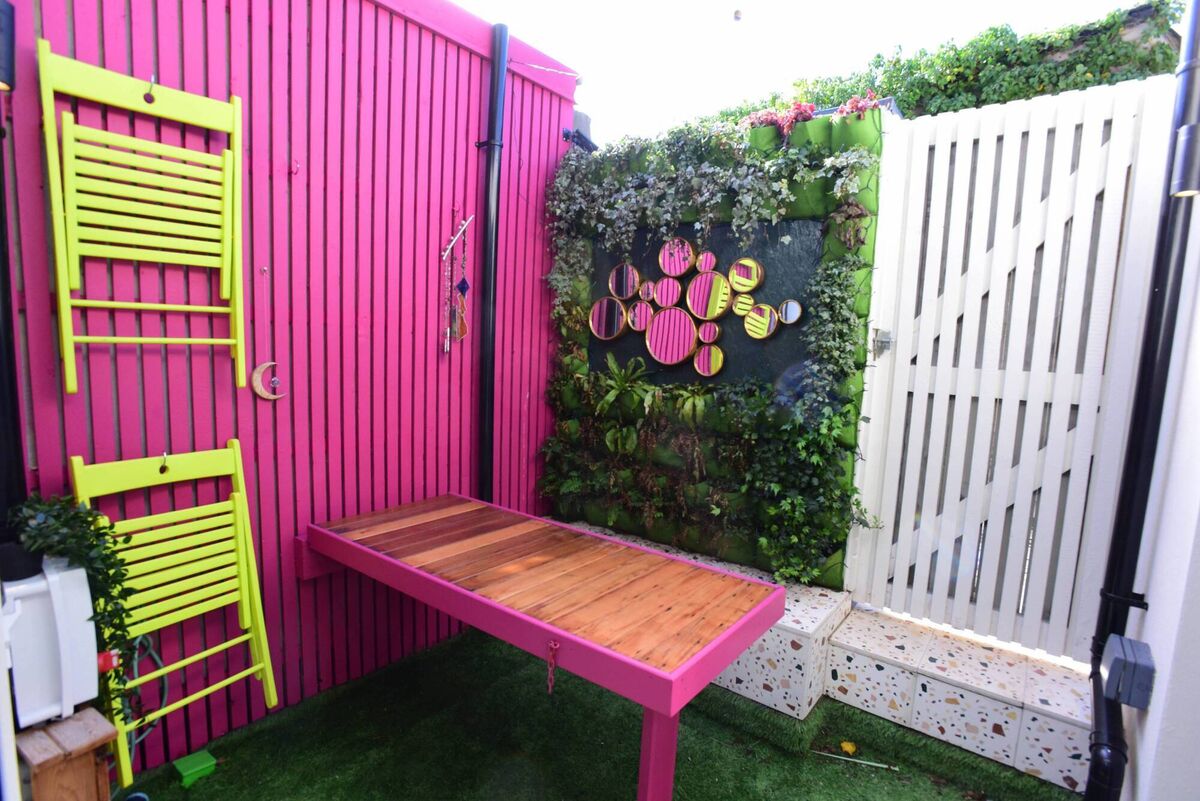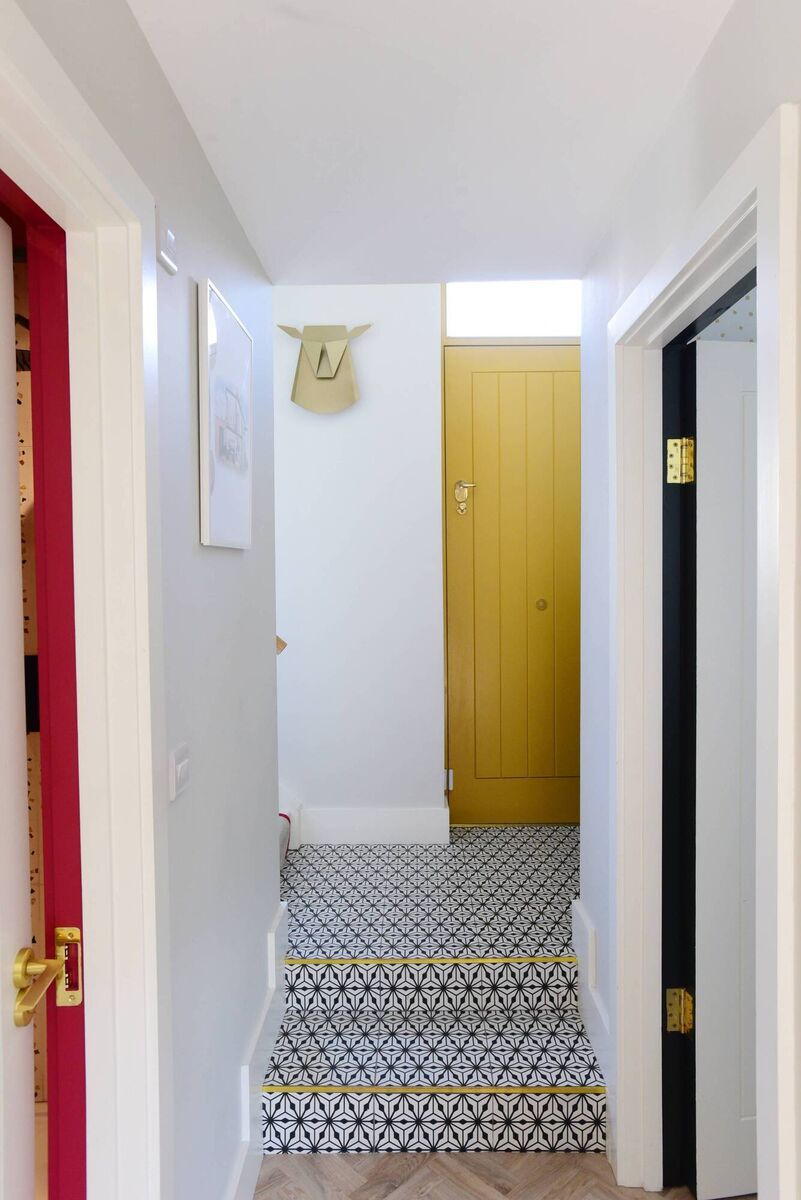Home Interiors: Choose a colour palette to reflect your life and what you love

Complementary yellows and blues in Jennifer's dining area. Pictures: Moya Nolan
The world-renowned interior designer Kelly Wearstler says it's "absolutely nothing to be afraid of". Colour, that is.
Well, easy for her to say isn’t it?
The rest of us, lacking her impressive interior design degrees and years of international high-end experience, might reasonably tremble when faced with the task of choosing a colour palette for our new or revamped homes.
Yet having a cohesive palette forms a vital blueprint to help us choose furniture, fabrics, flooring, paint; ensuring our homes won’t end up looking like an explosion in a Skittles factory.
Once again I’m going to advocate for working with an interior designer to help you along your way here.
However, if that is not an option for you then read on for a set of guidelines and tools to help you put together your own.

If you’re starting from absolute scratch, the first step is to decide which colours you like, and the good news is that you probably already know — even if you don’t know it yourself yet. Your home should be a reflection of you, your tastes and personality.
If you choose a colour because it’s trendy, or because you think it’s something you should like, it won’t end up feeling like it’s truly your home.
Therefore the best place to start is by looking at things that you already love — your clothes, art, furniture, the colours in your favourite cafe.
You can also browse catalogues and online pictures and save what you’re drawn to. It’s a good idea to put photos of everything you like somewhere together — either digitally on a board like Pinterest, PowerPoint, or Canva, or physically in a scrapbook or on a mood board.
Note also what colours exist in your home that you can’t change — for instance, the view outside your windows, a piece of furniture that you can’t part with, solid wood floors, or a magnificent old fireplace that you want to keep. Add these to your board.

Once you have gathered everything you like together you should start to see a theme. Note how the various colours you’re most drawn to make you feel.
Comfortable and familiar? Energised and happy? Relaxed? It is also worth noting what colours you really don’t like (you won’t find any purple in my house!).
Now that you have some favourite colours to start with, it’s important to understand how to choose the right tones to suit the intended theme of each room.
By tone, I mean how light or dark a colour is. Generally, light tones make us feel relaxed; vivid tones make us feel alert and energetic, and dark tones make us feel more subdued.
The colour wheel is a helpful tool.
This can help you to choose complementary or contrasting colours, depending on your goal for that room. It can also help you create different themes in each room while keeping to a cohesive palette — for instance, I have cheery yellows, blues, and pinks in my living areas, and complementary but more relaxing greens in my bedrooms.

Here are four themes to start with:
- The same colour in different tones can be soothing — for instance, an entirely green room with a dark green velvet couch, light green paint on the wall, and lots of various green pillows, throws, and artwork.
- Colours opposite each other on the colour wheel create a more dramatic look. I have a lot of this in my own home; eg, my “turmeric” couch against rich navy cushions, and my pink garden wall against lush greenery.
- Three colours equidistant apart on the colour wheel work harmoniously together while still providing some interesting contrast.
- For the brave, colours that are not complementary or triadic can be dramatic together, especially if you pair dark with light.
Next, it’s important to understand undertones — especially in paint. All paint is mixed from a few different colours — aside from pure red, blue, yellow, and white.
Everything else will have a hint of an undertone — for instance, my walls are mostly Subtle by Colourtrend.
This is a neutral off-white with undertones of brown and grey, which work well with my furniture colours of turmeric yellow in my living room and seafoam green in my bedroom.

A vital factor in choosing colours, especially paint colours, is the lighting in the room. Light will have a huge impact on how your colours show up, so I strongly recommend taking fabric, paint, flooring, and wallpaper samples into the room and viewing them at different times throughout the day.
Ideally, you will be able to paint samples onto a few areas of the walls — paint as large an area as possible and paint on all the walls if possible.
If you can’t paint samples on the wall, paint a large sheet of white paper and hang it against the walls in different lighting conditions.
A quick word of caution here — I know I’m referencing paint a lot, but try not to pick your paint colour first!
Paint is cheap and can be mixed to match pretty much any colour.
Therefore start with your main fabrics and flooring before making the final decision on your paint colour.
I bought my couch and my flooring before I finalised my kitchen paint colour and my living room wall colour. You always repaint — a minor inconvenience compared to buying a whole new living room suite. Feel the fear and paint it anyway!
Beyond the basic colour wheel, there are many online tools to help you generate a palette. One easy cheat is a good paint website — if you find your favourite colour on Colourtrend or Farrow & Ball, for instance, they will display other colours that work particularly well with it.
Some other great online tools that will help you generate a palette and are free to use are Adobe (color.adobe.com), Coolors (coolors.co), and Canva (canva.com/colors/color-palette-generator/). If you’re keen to stay on trend, check out Pantone (pantone.com) — its annual “colour of the year” sets the tone for global design trends.
If you are hesitant to go too far with dramatic walls or bold couches, you can always bring in pops of colour with cushions, rugs, artwork, lamps, books. But be sure that they actually work with your room, so that you’re not creating a confused and disorganised look.
When shopping for these items, bring fabric and paint samples of your existing items with you and be sure that the item you want works with your colour palette. If the item you’re looking at doesn’t go, you can’t have it. I’m sorry.
Take some time to look at it in the shop. Savour it. Take a photo. Print it and put it in a scrapbook to look at it whenever you want. And then walk away. If it doesn’t quite go then you’re going to end up hating it, or hating everything else in your home — either way, this item is not coming home with you.
- Got a question for Jennifer Sheahan? Email homeimprovement@examiner.ie












